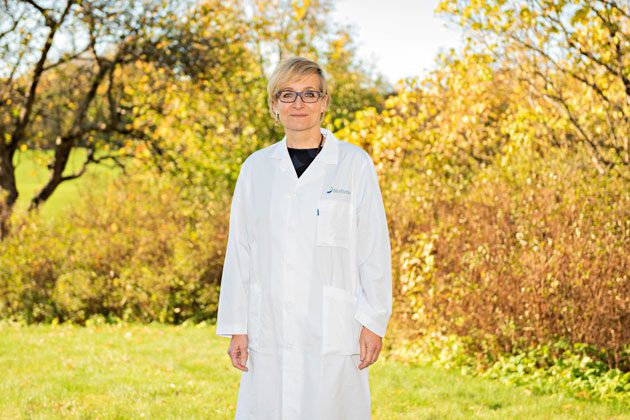Breeding cod for faster growth

Patience and maintenance of genetic diversity are two key reasons why farmed cod grow significantly faster than wild cod in net-pens.
Ever since the start of the national breeding programme in 2002, rapid growth and maintenance of genetic diversity has been prioritized. Several generations later, the result is a farmed cod that grows significantly faster than wild cod in net-pens.
Good news for the industry
“This is good news for the industry. We are now working with the fifth generation of farmed cod, and can show that selective breeding has produced additional growth of up to one kilogram”, says Nofima scientist Anne Helena Kettunen.
2.5 years after hatching, farmed cod will achieve a slaughter weight of 4 kilograms, while under the same conditions wild cod will only weigh 3 kilograms.
Maintenance of genetic diversity
Farmed cod is selected for body weight, but maintenance of the genetic diversity in the breeding population is even more important. High-quality genetic material with adequate genetic variation ensures that we can select for more robust and disease-resistant cod than what we currently have.
“We have selected carefully not only based on body size but also aiming at low relationships between selected individuals in order to conserve the genetic variation and avoid inbreeding. We have not been looking for quick solutions, but rather worked systematically, with great precision and with a long-term perspective. That makes it extra satisfying when we succeed with our efforts”, says Kettunen.
Cod from all along the coastline
To ensure the broadest possible genetic base, genetic material for farmed cod is gathered from northern and southern coastal cod as well as migrating Northeast Arctic cod, “skrei”.
The success is a result of collaboration across departments in Nofima. The departments for breeding and genetics, production biology, fish health and the breeding station for cod have made a collective effort to find solutions that now result in fast-growing cod well suited for aquaculture.
Facts
The research is funded by The Ministry of Trade, Industry and Fisheries in Norway.
Contact person
Research areas
Breeding and genetics
Research facilities
Centre for Marine Aquaculture
Projects